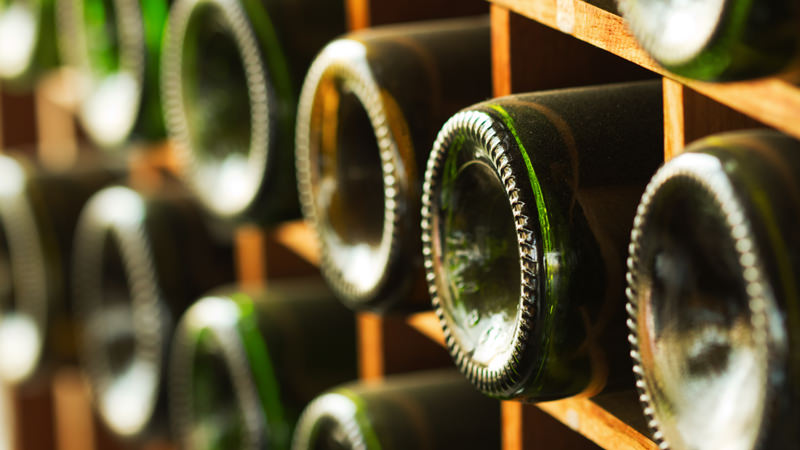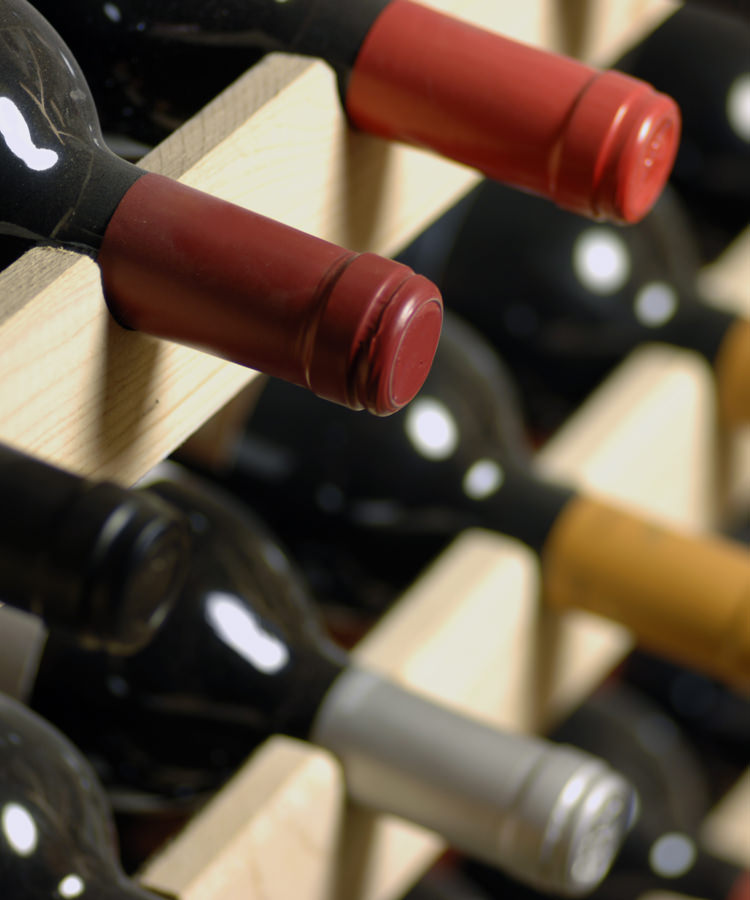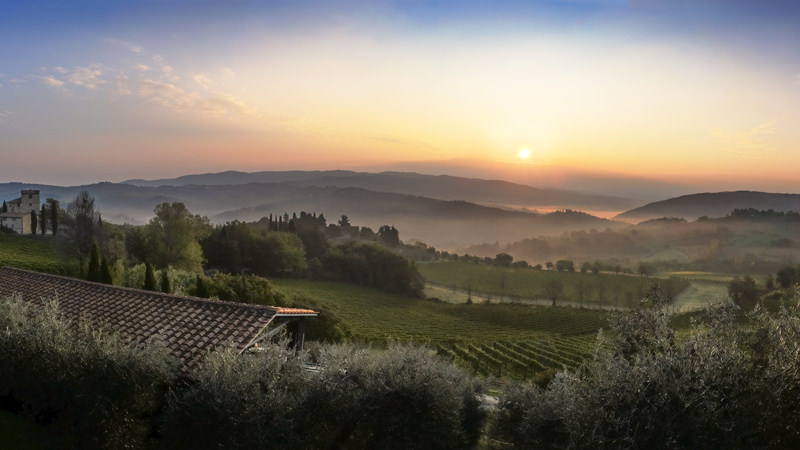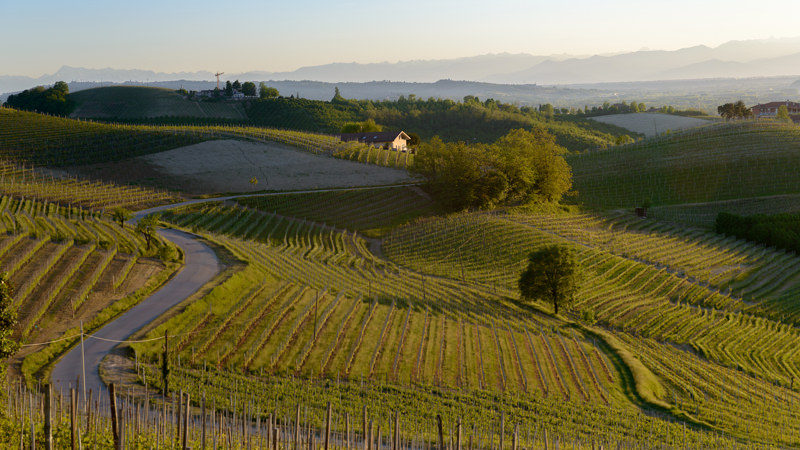
Collecting wine can involve complex bidding wars on rare entities with nebulous certificates of authenticity (yeesh). Or it can be as simple as carefully choosing bottles and storing them properly.
If you want to dip your toes into the collection pool, start with Italian wine. Sure, there are over 20 regions, and each region is its own “country” of food and wine. There are 590 classified grape varieties and counting. There are also more than 20,000 winemakers in the country. And yes, with DOC and DOCG combined, there are well over 400 appellations in Italy.
But remember, not all wines benefit from age. Ageable bottles come from a (comparatively) short list of varieties, most being red, a few being white. They are made in a slightly longer list of countries — for example, even though Cabernet Sauvignon is native to Bordeaux, it also fares well in Napa Valley. Both regions make ageable Cabernet Sauvignons.
But Italy is unique. It is one of the only international wine regions that make wine of impeccable quality under strict appellation law. Italian wines are made from varieties not often seen outside its borders. These wines can age — sometimes up to 70 years — and evolve with time. While native Italian grapes such as Sangiovese are grown in places like California, they are few and far between.
One reason Italian wines age so well is their structure. As elegant as these wines can be, they often have more structure than other age-worthy bottles. Additionally, Italian wines’ primary function is as an accompaniment to food. As a result, even as an Italian wine gets older, its body and flavors continue to pair perfectly with dishes from its native region. Italian wines still represent some amazing values, particularly in comparison with bottles of similar pedigree from, say, France or California, but it’s just a matter of time before they get discovered by a wider and ever-growing audience of collectors.
If you feel ready to dole out the funds and invest in some great Italian wine that you might hold onto for a while, it’s a good idea to find a great wine shop or wine source for day-to-day advice. In the meantime, we’ll get you started with a few tips for budding wine collectors.
If you have a basement find a nook. If you have an apartment find the coolest closet you have. If you wanna really take the plunge, go get yourself a wine fridge (don’t worry about dual temp — you’ll spend more and the zones are never accurate.) Now, it’s time to build your own Italian wine collection.
If this is a personal journey, remember that you are buying to enjoy, not sell to an auction house. Buy what you are financially comfortable with and start slow and steady. If you are going for cases, expect to pay from $300 to around $720 a case. Does that sound nuts? Well, it kind of is. Keep repeating: This an investment.
Fortunately, in Italy, price points are pretty digestible, so you might want to start by buying current releases. These comprise three categories: $20 to $30; $30 to $40; and $50 and up.
Try to buy wines within 10 years of the current vintage, no matter where they hail from in Italy. This way, you are guaranteed to have them within the liveliest phase of a wine’s evolution. The older a wine gets, the more the vintage is important.
Once you have a couple laying down, you can seek out some older vintages and either save them for a special occasion or buy bottles with different ageability so you can continue to check in on them over time.
There are multiple Italian grapes worth pursuing and aging, but two that define the prestige and character of Italian wine are Sangiovese, which is found in Tuscany and most of central Italy, and Nebbiolo, which grows in Piedmont and a few bordering regions.
To grow your Italian wine cellar, it’s helpful to explore which wines from these varieties have the most aging potential.
Sangiovese Buying (and Aging) Guide
There are many great wines made from this grape. Start your search by looking at three specific areas in Tuscany: The Chianti Classico, tucked up in the Chianti Hills to the north, the southern town of Montalcino, and the Vino Nobile di Montepulciano DOCG. These three regions produce such different expressions of Sangiovese that you can use their characteristics to inform future buying decisions from other appellations in Tuscany or central Italy.
Chianti Classico wines can be 100 percent Sangiovese, or they might be blended with up to 20 percent of other native grapes, like Canaiolo and Colorino. They may also feature international varieties, such as Cabernet Sauvignon, Merlot, and sometimes even Syrah.
Either way, that term “Classico” is important. Surrounded by the larger Chianti DOCG area, Classico wines made from this cluster of communes are beautiful, medium-bodied expressions that can hold up over a decade.
If you see the word “Riserva” on the label, take note! That means the wine was held a little longer in the cellar before release and made from the best grapes of the harvest. These bottles are made to age. As they do, their primary aromas of herbs, cherry, and hints of balsamic vinegar completely develop and elevate to complex notes of dried oregano, vibrant sour cherries mingling with rich, sweet balsamic, and a light kiss of decadent cured meats. It’s a wonder to behold.
(That said, don’t knock a non-Riserva Chianti Classico off your list. There are plenty of great ones out there.)
Beginning with the 2010 vintage there is a new designation in the land of Chianti that might peak your collector interest. The new “Gran Selezione” title is given to wines that are made from only estate fruit and at a slightly higher alcohol (which aids the aging process) and with a longer aging requirement of 30 months as opposed to Riserva’s requirement of 24 months. This is all very new for Chianti and getting in on the ground floor to see how this new style improves could be fun!
A little over an hour south of Chianti Classico is the town of Montalcino. Here, Sangiovese goes by the name Brunello.
The Brunello di Montalcino DOCG in southern Tuscany is some of the most sought-after wine in Italy. Where Chianti is medium-bodied, earthy, and has a slight tang, Brunello di Montalcino is a massive wallop of structure and aromas. Here, in one of the warmest and driest pockets of Tuscany, Brunello (the specific local clone of Sangiovese) grapes ripen to a fuller phenolic maturity than anywhere else in Tuscany.
These wines are so big they need some serious time in the cellar before we can even begin to approach them. Winemakers are legally forbidden from blending any other grapes than Sangiovese in Brunello di Montalcino and are required to age these wines for five years before release — or six years if it is a Riserva. When you’re buying Brunellos, you’ll find outstanding quality with Riservas (especially from top vintages); however, you truly can’t lose with a non-Riserva.
These wines are powerful and full-bodied, but balanced with good acidity, and feature all kinds of berries wafting up out of the glass. Think strawberries, cherries, blackberries, and cranberries, all wrapped up in hints of violets, herbs, sometimes licorice, and a dollop of mocha or espresso. As they age things get very interesting. These youthful notes give way to candied red fruit, leather, hazelnut, and bakers’ chocolate.
Brunellos are generally expensive but worth the price (especially when compared to peers from other countries). They are going to age for a long time. Whenever you see a deal on a Brunello and you trust the source, don’t wait. Grab one. You won’t be sorry.
Sitting stylistically between Brunello di Montalcino and Chianti, about 75 miles southeast of Florence, is one of the first DOC’s to be elevated to a DOCG, Vino Nobile di Montepulciano. Here Sangiovese is referred to as Prugnolo Gentile and can be blended with other native varieties such as Canaiolo and Colorino but also with the French varieties Cabernet Sauvignon, Syrah, and Merlot. The result is dark-hued and elegant medium-bodied red wine with signature bright red fruit notes and some vanilla with a hint of cinnamon.
The wines have smooth tannins and play well with the natural acidity, with a nice salinity running through the mouthfeel. There are two styles to look out for and your wine merchant can help you out. Some winemakers are purists and stick to the native grapes of the land that have thrived in the sandy soils around the town of Montepulciano, offering a more classic style, and some winemakers dollop their blends with some of the allowed international varieties, offering a more robust, rounder wine.
Nebbiolo Buying (and Aging) Guide
Wines made from Nebbiolo are some of the most powerful yet elegant wines on the planet. They age gracefully, giving and giving along the way.
The two words you need to know if you are planning to buy some of the most age-worthy wine on earth are Barolo and Barbaresco. These two wine regions are situated in the southern part of Piedmont. There is no blending here, only 100 percent Nebbiolo.
Eleven communes make up the wine-producing region of Barolo, including the actual village named Barolo, one of the five most prominent communes along with La Morra, Castiglione Falletto, Serralunga d’Alba, and Monforte d’Alba.
Fun fact: 87 percent of the production comes from those five communes.
These communes are distinct from one another, and not always easily identifiable on a wine label. Ask a trusted merchant if you are unsure. Take your time building your collection, perhaps with the goal of eventually acquiring one from each commune. Tasting the fine-drawn differences between them is an amazing experience.
Barolo wines have undeniable power. These Nebbiolo-based wines are highly tannic, with bracing acidity and an average of 14.5 percent alcohol. In their youth they are swimming with bright cherries and rose petals, plus subtle notes of anise, black tea, and leather. These aromas actually carry through as the wines age and are joined by earthy forest floor and fired clay.
Barbaresco wines have a subdued, elegant, yet still notable power. The Tanaro River, along with a variety of different soils, influence their structure and flavor. Acidity tends to be a bit higher, and they can age as long as the more brooding Barolos.
Barbaresco is smaller than Barolo, too, and has three less-known but unique communes. When buying Barbaresco to lay down, you’ll probably have fewer to choose from in a wine shop, but the ones you find will certainly be loved.
Other Age-worthy Italian Wines

The Aglianico and Sagrantino grapes make some of the most tannic and powerful wine on the planet. They age for a very long time and develop slowly.
Aglianico is native to Basilicata under the Vulture DOC and its heartland Campania, with the most exceptional examples coming from a region called Taurasi. Aglianico wines are enormously full-bodied and such a reward. They have notes of game meat, white and black pepper, plum, rose petals, and sometimes a waft of smoke, as they can be grown on the slopes of extinct volcanoes. They are amazing wines to age and watch grow.
Sagrantino is found in exactly one place in the world. They hail from Umbria, Italy’s landlocked region, and they are beautifully stubborn wines. Sagrantinos take some time to age, and, often, more time still to open up after the cork is popped.
Sticking your nose into a glass of Sagrantino, you’ll think someone sprayed cocoa powder in there. Then, notes of plum and reduced berry sauce, and slight hints of sage and vanilla, will wrap around that fruit. As it ages, all of these elements soften and the cocoa slides to the background, allowing the sage to meld into a garniture of herbs. This strangely sweet quality of chocolate-covered cherry takes this dry wine’s complexity to the next level.
These are just a few ways to embrace the aging process. Italian wines offer a world of possibility, no matter what sort of collection you hope to build.
This article is sponsored by the Italian Trade Commission.


